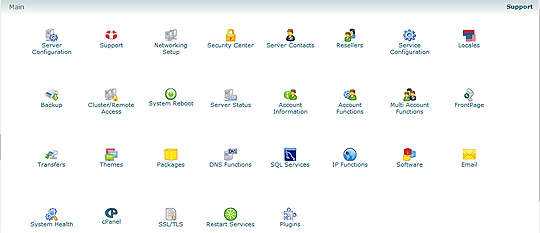Web Host Manager is a server admin control panel which allows an administrator to control Cpanel accounts. With WHM(Web Host manager), you have access and control to each and every reseller account through its unique interface. But, there is many built-in features. You can control the php settings with the php.ini file, reboot the Apache server, customize DNS and email MX settings. The chapter will not discuss each detail about Web Host Manager, but, you will have the necessary tips and tools needed to keep a healthy server up and running.

Web Host Manager is a very good and popular admin tool that is offered by giant hosting comapnies like Hostgator, Peer1 while cpanel is used by many too. Using a hosting service with Web Host Manager is a common practice for people who have outgrown a simple shared hosting account. There are many reasons why there is a need to upgrade such as; your websites get sufficinet traffic and / or you use too many shared resources. With shared hosting, you share memory and PHP server resources with others who use the same server. Eventually, as websites grow, the web host may ban or suspend your account based on your over-usage of resources. The best way to solve this problem, is to remove the sharing part. From experience, you often get what you pay more. The more you pay, the better the reources, the better the website performance.
Normally, when you upgrade from a basic shared hosting account, your options are a reseller account, VPS hosting and Dedicated server. A reseller account has access to Web Host Manager. However, the sharing part still exists. This really can be a potential bottleneck; especially is someone runs cron jobs on scripts that hog resources. The only advantage of reseller plans over VPS are ease of use. With a reseller plan, you don’t have the responsibility of keeping the server up and running.
With VPS and dedicated servers, you have access to all root files and can control, modify and configure your server as you want. But, when you must know how to manage your resources like memory, know if hardware failed, and reboot the server if it goes down. Most companies have monthly fees for this service, but, with some practice and patience using a VPS or dedicated server can become second nature. This chapter covers the requirements for keeping a VPS or dedicated server live and well.
© 2018 ALL Rights Reserved | Sitemap
Vancouver | North Vancouver | Burnaby | Richmond | Coquitlam | Port Coquitlam | Surrey | Langley | Maple Ridge | Mission | Abbotsford | Kamloops | Kelowna | Victoria | Squamish | Whistler | Pemberton